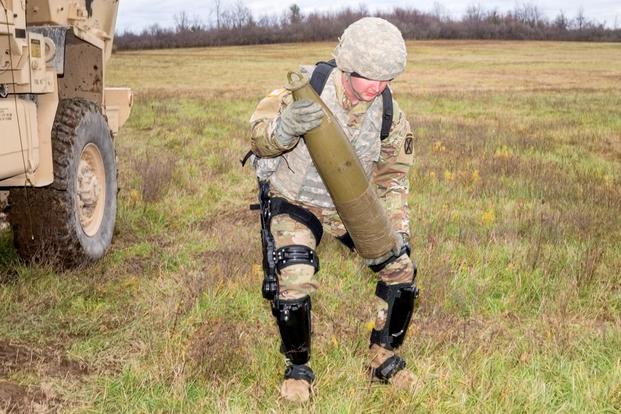The U.S. Army is stepping up efforts to develop soldier-worn exoskeletons designed to relieve some of the burdensome weight that combat troops carry into battle.
In mid-December, Army researchers and soldier equipment officials held a three-day exoskeleton event at Fort Drum, New York, known as a User Touch Point event, that allowed technology vendors, requirement developers and engineers to gain soldier insights on current exoskeleton technology, such as Lockheed Martin's ONYX system.
The event came on the heels of a $6.9 million Army contract to Lockheed Martin to improve OYNX, a powered, lower-body exoskeleton designed to increase a soldier's strength and endurance.
OYNX uses electro-mechanical knee actuators, special sensors and an artificial intelligence computer to become familiar with the user's movements and apply the right torque at the right time to assist with walking up steep inclines and lifting or dragging heavy loads, according to a Nov. 29 Lockheed press release announcing the contract award.
The three-day User Touch Point event helped vendors that are developing future technology understand, from a soldier’s perspective, how exoskeletons can be used in a tactical environment, James Mingo, a senior military analyst at Training and Doctrine Command, said in an Army press release.
The event provided an opportunity to gather soldier feedback to advance the Army's exoskeleton program, said Raul Esteras-Palos, who works in the Robotics Requirements Division of the Capabilities Development and Integration Directorate at Fort Benning, Georgia.
"It provided [hands-on] experience to the movement and maneuver soldiers of some of the top seven combat [military occupational specialties]," Esteras-Palos said.
The service's Research, Development and Engineering Command is working on future soldier touch point events with the 82nd and 101st Airborne Divisions, said David Audet, chief of Mission Equipment and Systems at the RDECOM Soldier Center.
"This was a unique opportunity for developers and engineers," he said. "We are indebted to the troops for their selfless service and owe them the opportunity to listen to their concerns and take action."
The Army also is trying to ensure that these hard exoskeletons will be designed to comfortably fit soldiers wearing them in combat, according to a recent service request for information.
Special Operations Command launched an ambitious endeavor in 2014 to develop the Tactical Assault Light Operator Suit, or TALOS, an Iron Man ensemble that would provide operators with full-body ballistics protection and increased physical performance. Four years later, the program has produced several prototypes but still faces many challenges.
-- Matthew Cox can be reached at matthew.cox@military.com.










